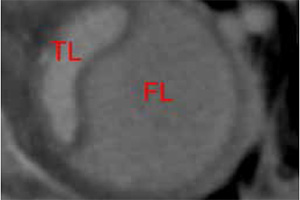Predicting aortic enlargement in type B aortic dissection
Abstract
Patients with uncomplicated acute type B aortic dissection (ABAD) can generally be treated with conservative medical management. However, these patients may develop aortic enlargement during follow-up, with the risk of rupture. Several predictors have been studied in recent years to identify ABAD patients at high risk of aortic enlargement, who may benefit from early surgical or endovascular intervention. This study reviewed and summarized the current available literature on prognostic variables related to aortic enlargement during follow-up in uncomplicated ABAD patients. It revealed multiple factors affecting aortic expansion including demographic, clinical, pharmacologic and radiologic variables. Such predictors may be used to identify those ABAD patients at higher risk for aortic enlargement who may benefit from closer radiologic surveillance or early endovascular intervention. This approach deserves even more consideration because a significant number of patients develop aneurysmal degeneration along the dissected segments during follow-up, and may lose the opportunity for endovascular treatment if not identified at an early stage.
Cover






